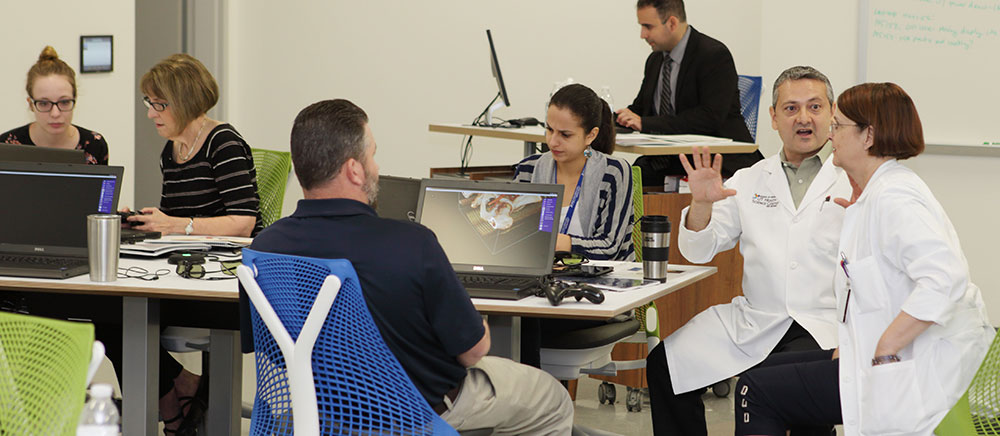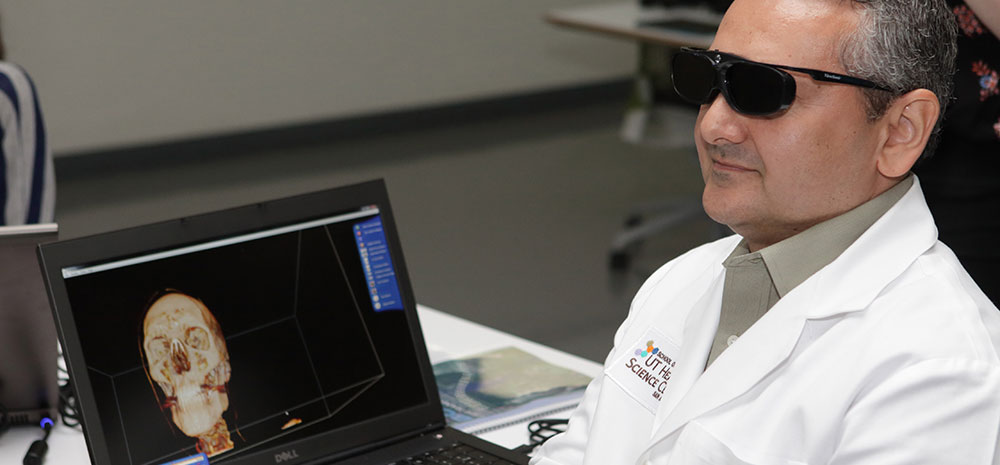UT Health San Antonio Unveils 3D Virtual Anatomy Lab
April 29, 2016
For years, The University of Texas Health Science Center at San Antonio (UTHSCSA) worked on designing their all new Academic Learning and Teaching Center (ALTC) facility. Their commonly shared problems of experiencing restrictions in the cadaver lab became an issue they decided to deal with. UTHSCSA's new virtual anatomy lab in the ALTC creates a learning environment that reinforces and extends the concepts taught in traditional gross anatomy by providing interactive 3D visualizations rendered from real human anatomy, all made possible by BodyViz anatomy software.
“This is 100 percent interactive. You do your best learning through active learning, where you are interacting, and you are engaging in the material. That is what this building is about. This is how it is set up,” explained the director of the human anatomy program at the UT Health Science Center, Omid Rahimi, PhD.

BodyViz introduces a unique way for UTHSCSA instructors to provide students with the necessary resources to engage with and learn from real 3D human anatomy, without the restrictions accompanied with cadaver labs. At each of the 84 interactive stations within the virtual anatomy lab, BodyViz provides students the ability to virtually dissect, explore, and visualize 3D anatomical scans of real human anatomy, just as they would in the cadaver lab. Working visualizations rendered from radiological imaging provides a platform that highlights the natural variations in human anatomy, easily compares normal and abnormal pathologies side by side, and brings actual patient cases into the classroom. These features empower students with an unprecedented hands-on learning experience that cannot be mimicked with traditional anatomical resources. Utilizing 3D visualizations created from real human anatomy, in conjunction with interactive learning modules made specifically to help students navigate through dissection procedures, is essential to helping them comprehend complex 3D anatomical structures and the relationships between them.
"We can virtually rotate the body. We can look at patient injuries and pathologies," explained Omid Rahimi, Ph.D. in his interview with ABC affiliate KSAT. “We can use 3D glasses to get that spatial relationship we need to have in order to teach structure and relationships.”
The glasses referred to by Dr. Rahami transform the 3D anatomy visualizations into stereoscopic, more commonly referred to as virtual reality. In 3D stereo, students become immersed in the anatomy while the 3D visualizations appear to jump off of the screen. Viewing anatomy in 3D stereo, Dr. Rahimi believes, unlocks insights that cannot be achieved in the cadaver lab. “The visualization system enhances the education experience beyond what we can do in the gross anatomy lab. In a typical lab, you cannot pick up a set of blood vessels in isolation of other tissues and rotate them in front of your face. This tool allows students to do that. We are certainly excited about it,” Rahimi said.

Isolating anatomical features by tissue type is just one of the control options provided by BodyViz. Users can create clipping planes, filter through tissue types, explore from unlimited vantage points, and annotate particular structures within the visualization. Fueled by a goal of increasing interaction among students, faculty, and technology, innovative learning spaces were integrated throughout the building at the UT Health Science Center.
"Unique to this new teaching environment, there is no front or back of the classroom-it is an integrated space linked by technology," said Francisco González-Scarano, M.D., dean of the School of Medicine and executive vice president for medical affairs. "The interaction this inculcates will enhance students' ability to gain mastery of complex concepts of health care, both in the School of Medicine and throughout the Health Science Center."
To learn more about how BodyViz Anatomy Software helped UTHSCSA overcome the restrictions of their cadaver lab,schedule a demo with one of our solutions consultants.